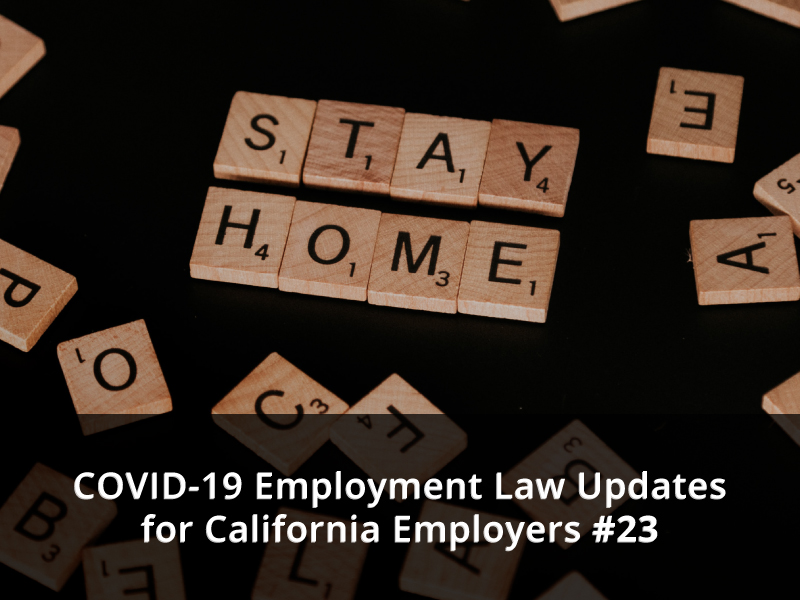Here is installment #23 of our ongoing series of COVID-related posts of interest to California employers.
Reacting to increased Coronavirus infections and tightening hospital occupancy, Governor Newsom issued on December 3, 2020, a new “Regional Stay at Home Order.” You can find the new Order and FAQs here and here.
This Order modifies the existing stay-at-home Orders, including the “Blueprint” and the November stay at home order, which we linked to at the bottom of yesterday’s post here. This Order also does not supersede stricter local and county mandates.
This Regional Stay at Home Order takes effect 48 hours from the December 3 issuance (so, December 5 at the earliest). However, although the Order will technically be in effect as of December 5, its provisions do not *necessarily apply* until certain conditions worsen as explained below.
The particulars of how this new order works are here. In essence, the state is divided into five “regions.” The Order’s restrictions take effect when a given region’s ICU (intensive care unit) capacity in its hospitals drops below 15%. Then the Order applies for 21 days. If a given region’s ICU capacity increases to greater than 15% (as COVID hospitalizations decrease), the stay at home order can be lifted for that Region.
What does the Order require? In summary, according to the website linked above, when the ICU levels drop to below 15% capacity in a Region, the following activities must close:
- Indoor and outdoor playgrounds
- Indoor recreational facilities
- Hair salons and barbershops
- Personal care services
- Museums, zoos, and aquariums
- Movie theaters
- Wineries
- Bars, breweries, and distilleries
- Family entertainment centers
- Cardrooms and satellite wagering
- Limited services
- Live audience sports
- Amusement parks
In the following industries, although they may operate, there are additional limitations on operations while ICU capacity is below 15%, in addition to 100% mask compliance and social distancing:
- Outdoor recreational facilities: Allow outdoor operation only without any food, drink or alcohol sales. Additionally, overnight stays at campgrounds will not be permitted.
- Retail: Allow indoor operation at 20% capacity with entrance metering and no eating or drinking in the stores. Additionally, special hours should be instituted for seniors and others with chronic conditions or compromised immune systems.
- Shopping centers: Allow indoor operation at 20% capacity with entrance metering and no eating or drinking in the stores. Additionally, special hours should be instituted for seniors and others with chronic conditions or compromised immune systems.
- Hotels and lodging: Allow to open for critical infrastructure support only.
- Restaurants: Allow only for take-out, pick-up, or delivery.
- Offices: Allow remote only except for critical infrastructure sectors where remote working is not possible.
- Places of worship and political expression: Allow outdoor services only.
- Entertainment production including professional sports: Allow operation without live audiences. Additionally, testing protocol and “bubbles” are highly encouraged.
the Order also provides that these sectors may remain open when (1) a remote option is not available and (2) physical distancing and masking are practiced and (3) additional preventive measures are implemented:
- Critical infrastructure
- Schools that are already open for in-person learning
- Non-urgent medical and dental care
- Child care and pre-K
So, where does one find a map showing where the ICU capacity is under 15%? The list of counties in each region and the current ICU capacity are contained on this webpage here. As you can see, none of the five regions are < 15% ICU capacity now (as of this writing). But the “Northern California” Region is closest with 18.6%. That region includes: Del Norte, Glenn, Humboldt, Lake, Lassen, Mendocino, Modoc, Shasta, Siskiyou, Tehama, and Trinity counties. The other regions and the counties located within them are listed on the page linked above.
Once a “Region” hits < 15% ICU capacity, the restrictions listed above go into effect within 24 hours. So, businesses must prepare now to adjust operations or close.



 Trending
Trending